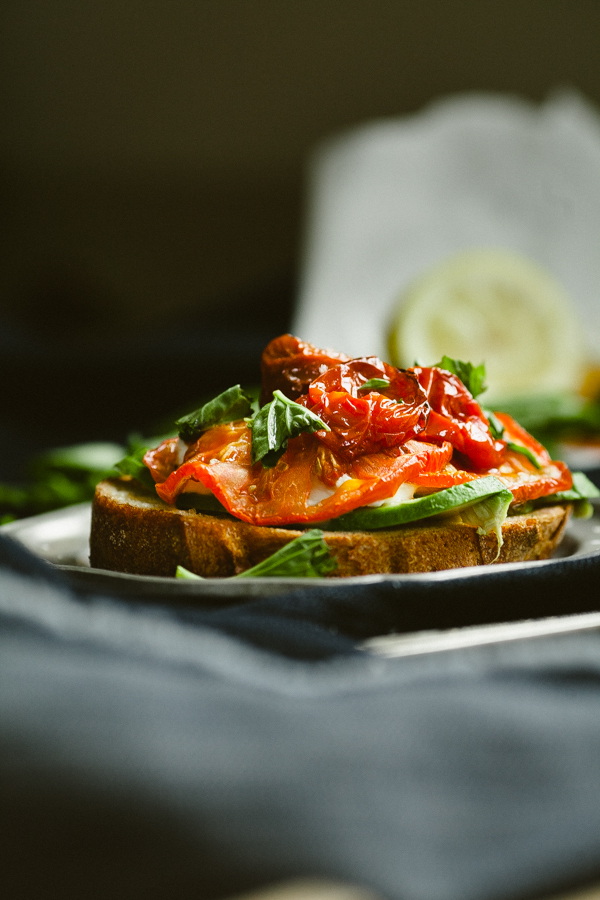Often the best way to learn anything is through making mistakes. I know that in my journey as a food photographer, I’ve made plenty of mistakes and learned a great deal from them. Here are some of the biggest food photography mistakes that I’ve made, so you can learn from them as well.

Mixed light —
If you have read any of my other posts on food photography you have probably heard me say this before: quality over quantity.
When you first begin to shoot food, the natural response is to turn on all the lights in the house and open all the blinds in an attempt to let in as much light as possible. The problem with that is that different light sources have different color temperatures so when you mix light sources you end up with images with many different color tones in them. Thus, your food ends up looking orange, but the plate looks blue.
My solution
Whenever I shoot food I turn off all the overhead lights and open up the curtains to let in the natural light. The black table below is where I shoot about 80% of my photos. Lots of light from the windows while all the lights in the house are turned off.
If you cannot use natural light, then close the curtains and set up lights.

The rut —
Oftentimes as photographers we get completely focused on one specific “style” of photograph. I shoot vertical images, top down most of the time. Those are the images I’m drawn to and what I like to see. But as a photographer I have grown so much by forcing myself to experiment with new angles.
My solution
Before I pack up my camera and eat the dish I’m shooting, I’ll try shooting it in a way that I’ve not done before – back lit, 3/4 angle, underexposed, overexposed, from slightly below the subject, standing on a chair, super up-close, far away, etc. You get the idea. Try seeing the subject in a new light and from a new point of view. Often these images excite me the most and ultimately comprise many of the photos I am most proud of.

After I got the top down shot of this dish, I pulled back, crouched down and got this shot.
Shooting on auto mode —
I teach food photography the same way I teaching baking – by the ingredients. When I’m teaching students to bake, I want them to understand what the ingredients do and how they react to one another. Students can then control the ingredients rather than being solely guided by the recipe and not knowing the possible issues if the recipe doesn’t work.
My solution
In the same way, I teach my photography students how to step away from auto mode by understanding how aperture, shutter speed and ISO work. When you understand those tools, you are able to dream up an image then create it. It gives you the power and takes away the guess work.
The best way to learn this is by doing it. With digital photography it’s easy because you can simply take a quick glance at the screen after your shot and see how these three things affect the image.
Try the extremes — shoot with a very low shutter speed then see what changes when you shoot at a very high shutter speed, for example. This way you can see exactly how the image changes and understand how shutter speed affects the image. Do the same for ISO, aperture, white balance and any other setting you want to understand.

The over-edit —
Editing your image is like putting on make-up. You don’t want people to look at your photo and say, “Really great editing on that photo!” But rather you want them to comment on the photo itself.
My solution
Whatever you do in post production is there to enhance the image but not distract from it. Keep it simple.
Looking like the crowds —
There are so many different styles and trends in food photography right now. It’s important to learn from others, pay attention to what you like and what moves you. But don’t spend all your time trying to emulate others’ styles when you could focus on creating your own photography voice.
My solution
Trust yourself and your instincts. People want to see your unique style, and what will ultimately be the most satisfying to you as an artist.

Share tips, start a discussion or ask one of our experts or other students a question.
No Responses to “5 Common Food Photography Mistakes & How to Avoid Them”